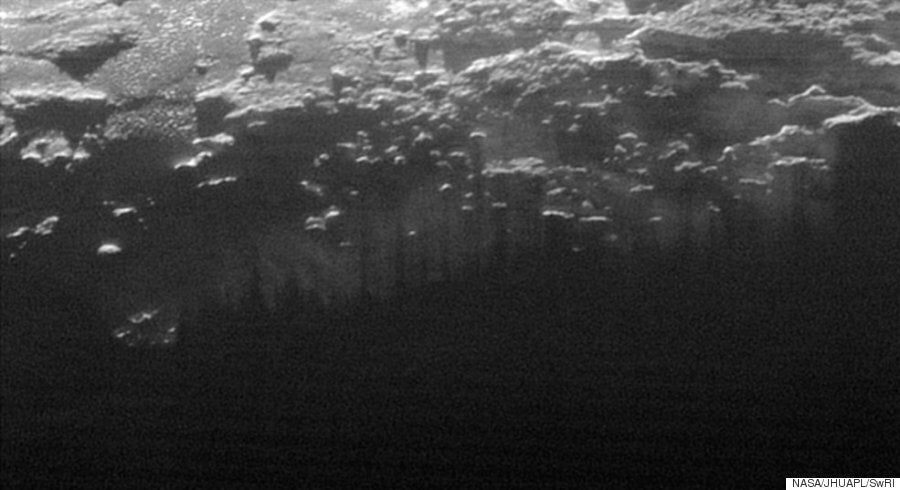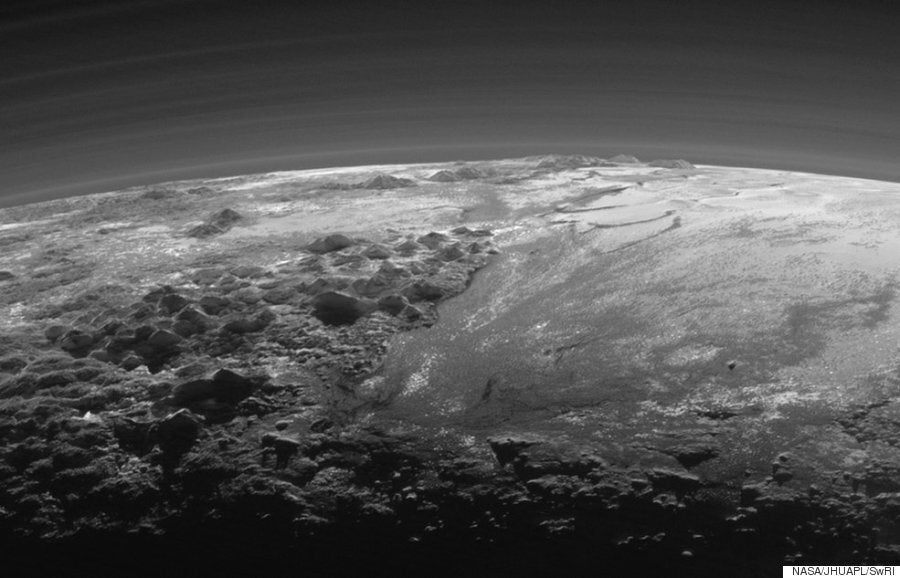NASA's New Horizons spacecraft has once again left us catching our breath.
The latest images taken by a wide-angle Ralph/Multispectral Visual Imaging Camera reveal a panoramic view of Pluto, backlit by the sun, which show off some 'surprisingly earth-like' features.
According to NASA, the images were taken 11,000 miles from Pluto, 15 minutes after the craft was at its closet approach to the dwarf planet in July.
“This image really makes you feel you are there, at Pluto, surveying the landscape for yourself,” said New Horizons Principal Investigator Alan Stern.
“But this image is also a scientific bonanza, revealing new details about Pluto’s atmosphere, mountains, glaciers and plains.”
Aside from giving researchers astonishing views, the images also show, what NASA call, a low-lying haze rising from near the ground to at least 60 miles above the surface.
SEE ALSO:
- NASA's New Horizons Images Of Pluto Have Left Scientists 'Reeling'
- NASA's New Horizons #PlutoFlyBy Success Accurately Summarised In A 16-second Video
- New Horizons Conspiracy Theorists Claim Pluto Mission Is A Badly Photoshopped Fake
- Pluto And Charon Close-Up Pictures From New Horizons 'Amazes' NASA Scientists
- Amazing Nasa Pluto Image Is Proof That NONE Of These Things Are On Its Surface
"In addition to being visually stunning, these low-lying hazes hint at the weather changing from day to day on Pluto, just like it does here on Earth," said Will Grundy, lead of the New Horizons Composition.
The pictures also suggest the ice on Pluto is not merely formed of water, as seen here on earth but could also be made of nitrogen.
Making a comparison between Pluto and earth, experts also commented why some of the planets features are "surprisingly earth-like."

"We did not expect to find hints of a nitrogen-based glacial cycle on Pluto operating in the frigid conditions of the outer solar system,” said Alan Howard, a member of the mission’s Geology, Geophysics and Imaging team.
"“Driven by dim sunlight, this would be directly comparable to the hydrological cycle that feeds ice caps on Earth, where water is evaporated from the oceans, falls as snow, and returns to the seas through glacial flow.”
“Pluto is surprisingly Earth-like in this regard,” added Stern, “and no one predicted it.”

The team and their stunning images won over scientists and space enthusiasts, including Dr. Brian May who tweeted:
